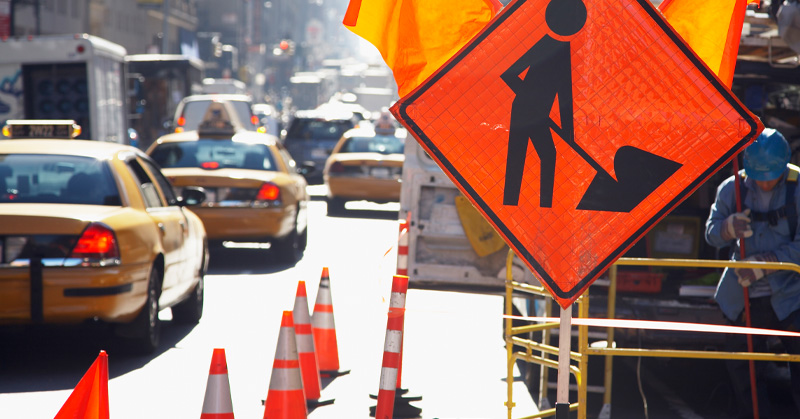
Five Ways Contractors Can Lower Workers’ Compensation Costs
By Alliant Specialty
Listen to the audio version:
Workers’ compensation is one of the largest and most complex insurance costs contractors face. High injury rates, misclassified labor and inconsistent claims handling can push premiums beyond control. In a market where even small changes in safety performance can have a significant financial impact, general contractors need a clear strategy to contain costs and improve their risk profile.
Fortunately, workers’ compensation insurance costs are not fixed. With the right controls in place, you can take back financial control and improve how carriers view your business. In this article, we’ll discuss practical steps you can take today to drive down the costs of workers’ compensation while maintaining adequate coverage to protect your employees and your business.
Proven Strategies to Reduce Workers’ Compensation Insurance Costs
While workers’ compensation is a necessary safeguard against threats like slips, trips and falls and work-related illnesses, high premiums put undue pressure on contractors’ bottom lines. By effectively managing claims, creating a strong safety culture and demonstrating a commitment to workers’ well-being to insurers, your business has the potential to achieve significant savings. Use these best practices to enhance your risk management efforts while mitigating costs.
1. Manage Classifications and Payroll
Using the wrong workers’ compensation class codes is one of the most common causes of premium overpayment or audit disputes. If laborers are misclassified as higher-risk trades or subcontractors are not reported correctly, you may be paying more than necessary or exposing your business to uncovered liability.
To avoid unnecessary expenses stemming from misclassification or lapses in reporting, use these best practices:
- Review all workers’ compensation classifications annually.
- Break out payroll for dual-role employees (e.g. supervisor and hands-on labor).
- Require subcontractors to show valid certificates of insurance and confirm their classification aligns with work performed.
By correctly classifying low-risk and high-risk employees, your business can avoid surging premiums while ensuring you have the necessary coverage that complies with regulations.
2. Monitor and Improve Your EMR
Your experience modification rate (EMR) is a key factor in determining your workers’ compensation premium. It reflects your loss history compared to industry peers. A high EMR signals higher risk, raises premiums and can disqualify you from bids.
To improve your EMR over time, use the following proven strategies:
- Request EMR worksheets and monitor trends year over year.
- Focus on reducing frequency and severity of claims.
- Close out minor claims quickly before they affect future EMR ratings.
- Consider working with a claims advocate or safety consultant to improve EMR drivers.
If your workplace faces a high number of workers’ compensation claims, prioritize building a robust safety culture, including conducting regular safety training, performing site inspections and rewarding employees for safe behaviors. These small practices can have an incremental impact in reducing accidents and driving down the costs of premiums.
3. Take Control of Claims Early
How you respond in the first 48 hours after an injury often determines the outcome. Delays in care, incomplete reporting or lack of follow-up can turn manageable injuries into costly open claims.
Use these strategies to effectively respond to workplaces injuries and illnesses:
- Implement a clear injury response protocol, including providing first aid, properly documenting and reporting the incident and submitting the claim.
- Train foremen and supervisors on how to correctly document incidents.
- Maintain preferred provider relationships for fast medical attention.
- Review open claims quarterly with your broker and carrier to manage reserves.
Responding to workplace incidents in an efficient, organized manner will help your business achieve a quick claims resolution while demonstrating care for injured workers, contributing to greater employee retention rates.
4. Build a Return-to-Work Program
The longer an injured employee stays off work, the more expensive the claim becomes. Modified-duty or transitional work can significantly reduce lost-time costs and improve employee morale.
To help injured employees smoothly transition back to work, leverage these best practices:
- Create a list of light-duty roles available on every project.
- Communicate return-to-work expectations in your onboarding and safety training.
- Partner with medical providers who understand construction restrictions and can recommend safe tasks.
Taking these measures will help to keep employees’ skills sharp and boost overall engagement, helping you to keep projects moving efficiently while supporting employees’ recovery.
5. Make Safety Part of Your Culture
Safety is the most effective way to prevent claims, but it must go beyond written policies. Crews need to be engaged, trained and held accountable for safe behavior on every site.
The following measures can help you build a strong safety culture:
- Conduct regular toolbox talks tied to recent incidents or job-specific hazards.
- Use leading indicators like near-miss reporting and jobsite audits to identify risks before they escalate into injuries and accidents.
- Invest in foreman-level safety leadership training.
- Recognize and reward safe behavior publicly.
By developing a shared vision for safety and health, your employees are more likely to work collectively toward securing everyone’s well-being, reducing the risk of accidents while increasing employee engagement and retention.
How Alliant Construction Can Help Mitigate Workers’ Compensation Insurance Costs
Workers’ compensation does not have to be a runaway cost. By accurately classifying job roles, actively managing claims and building a proactive safety culture, general contractors can reduce premiums and improve profitability. At Alliant Construction, our specialists bring decades of experience in helping contractors adopt insurance solutions and strategies that maximize protection while mitigating costs.
Reach out to Alliant Construction for help developing a workers’ compensation risk management program that aligns with your operations and supports long-term growth.
Alliant note and disclaimer: This document is designed to provide general information and guidance. Please note that prior to implementation your legal counsel should review all details or policy information. Alliant Insurance Services does not provide legal advice or legal opinions. If a legal opinion is needed, please seek the services of your own legal advisor or ask Alliant Insurance Services for a referral. This document is provided on an “as is” basis without any warranty of any kind. Alliant Insurance Services disclaims any liability for any loss or damage from reliance on this document.
News & Resources




